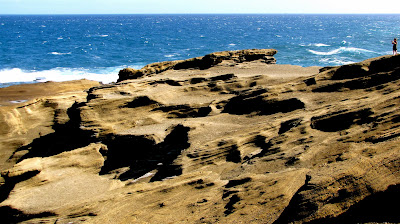
(photo courtesy of Wikipedia)
The USS Arizona Memorial, located at Pearl Harbor in the City and County of Honolulu, Hawaiʻi, marks the resting place of 1,102 of the 1,177 sailors killed on the USS Arizona during the Attack on Pearl Harbor on December 7, 1941 by Japanese imperial forces and commemorates the events of that day. The attack on Pearl Harbor and the island of Oʻahu was the action that led to United States involvement in World War II.
The memorial, dedicated in 1962 and visited by more than one million people annually,[1] spans the sunken hull of the battleship without touching it. Since it opened in 1980, the National Park Service has operated the USS Arizona Memorial Visitor Center associated with the memorial. Historical information about the attack, boat access to the memorial, and general visitor services are available at the center. The sunken remains of the battleship were declared a National Historic Landmark on 5 May 1989. (Wikipedia)




















































